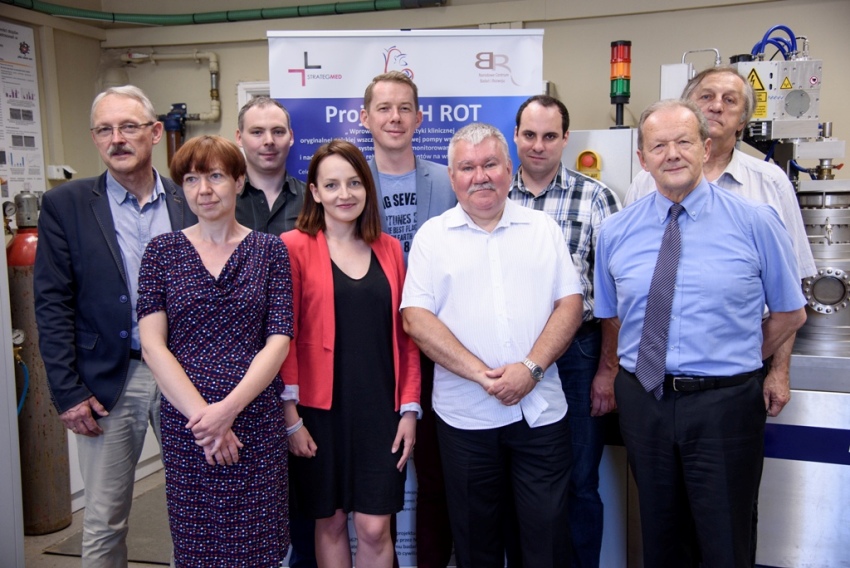Surface treatments in low temperature plasma
Our group develops unique methods of surface modification of materials, including multi-component and composite surface layers with a nanocrystalline structure. Excellent functional properties of the produced layers have already gained national and international recognition, confirmed by applications in medicine and industry.
The developed methods of producing surface layers mainly use non-equilibrium plasma, new reactive gas atmospheres containing environmentally safe organic compounds, also in hybrid technologies. These technologies are realized by combining various surface treatment methods, such as: PDT, PVD, CVD and electrochemical processes. Thus produced surface layers are the most modern generation of anti-abrasive and anti-corrosion layers, which also enable the increase of mechanical properties of the treated construction and functional materials, such as: various grades of steel, titanium and its alloys, nickel and magnesium alloys, aluminum, polymers and polymers composites. The Group also does basic research in the field of mechanisms of layers formation in low-temperature plasma conditions. The research also concerns detailed characteristics of the produced surface layers in terms of microstructure, surface topography, chemical and phase composition, residual stresses in produced layers and mechanical, chemical and biological properties of the treated metals and polymer composites in terms of industrial applications and development of new construction solutions for devices for the implementation of the above mentioned processes
Research activities
- Thermo-chemical treatments in low-temperature plasma
- Physical vapor deposition (PVD) processes
- Chemical vapor deposition (CVD) processes
- Hybrid technologies using low-temperature plasma
-
Study of the properties of the produced surface layers and their characteristics
Research offer
- Tribological tests in systems: ‘three rollers – cone’, ‘ball-on-disc’, ‘block-on-ring’ in accordance with the corresponding standards
- Coatings adhesion tests with the ‘scratch-test’ method
- Analysis of microstructure, phase and chemical composition of the produced surface layers (SEM, TEM, OM, XRD, EDS, XPS, SIMS),
- Research on surface morphology and topography
- Evaluation of mechanical properties
- Corrosion resistance tests using potentiodynamic and impedance spectroscopy methods
-
Surface treatment of structural and functional materials in terms of increasing the durability and reliability of specific products
Projects
- Clinical practice implementation of the original Polish implantable artificial heart assist rotary pump, remote monitoring system and remote-supervised rehabilitation of patients with heart assist, research task: ‘Transfer of the technology of the clinical Religa Heart ROT pump production to the pilot production of the clinical version of the prosthesis and production of informative batch for preclinical and clinical research’, NCBR, STRATEGMED 2 266798
- Modifying of properties of NiTi shape memory alloy by producing composite surface layers using low-temperature plasma for medical applications, NCN, OPUS 9, 2015/17/B/ST8/00620 POLON
-
Planetary penetrator for the THERMO-LR experiment on the Luna-Resurs 1 mission, NCBR, 245691 POLON
Research collaboration
- Professor Zbigniew Religa Foundation of Cardiac Surgery Development, Zabrze
- Children’s Memorial Health Institute, Warsaw
- Institute of Precision Mechanics, Warsaw
- Institute of Metallurgy and Materials Science of the Polish Academy of Sciences, Cracow
- Faculty of Computer Science and Materials Science, University of Silesia, Sosnowiec
-
Astronika sp. z o.o., Warsaw
Contact
Professor Tadeusz Wierzchoń
tadeusz.wierzchon@pw.edu.pl
+48 22 234 87 05
Division of Surface Engineering

